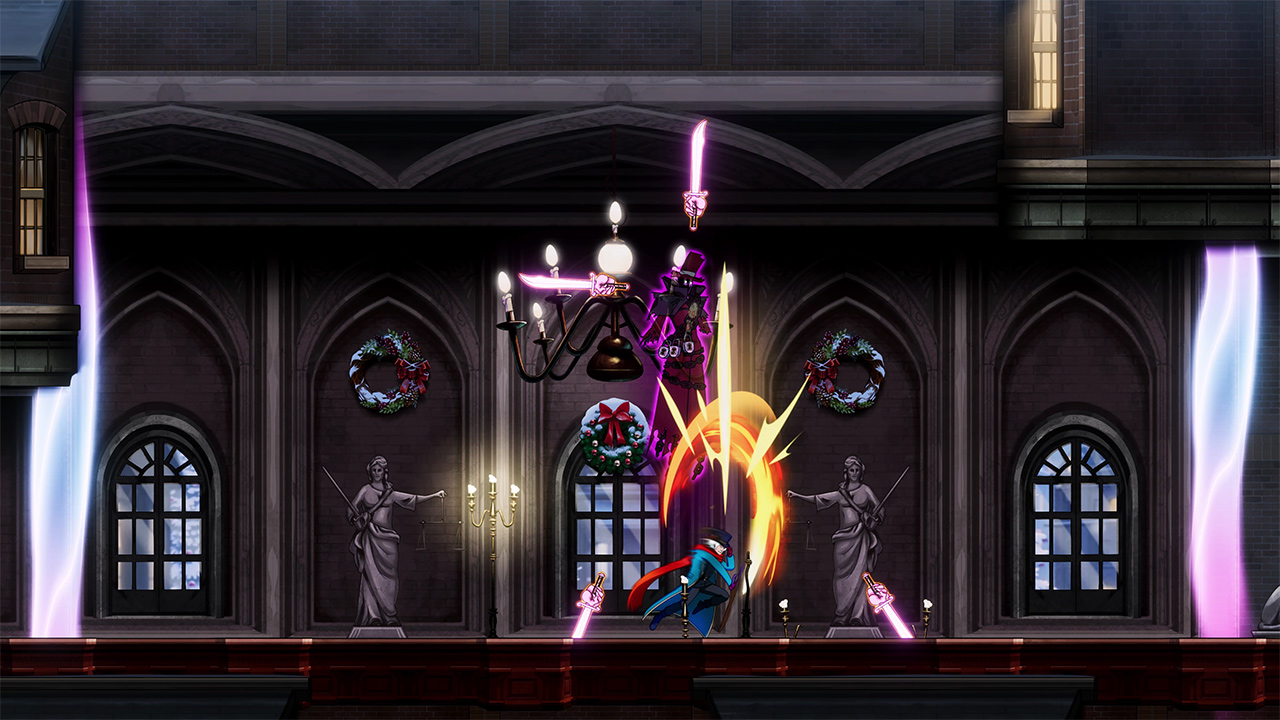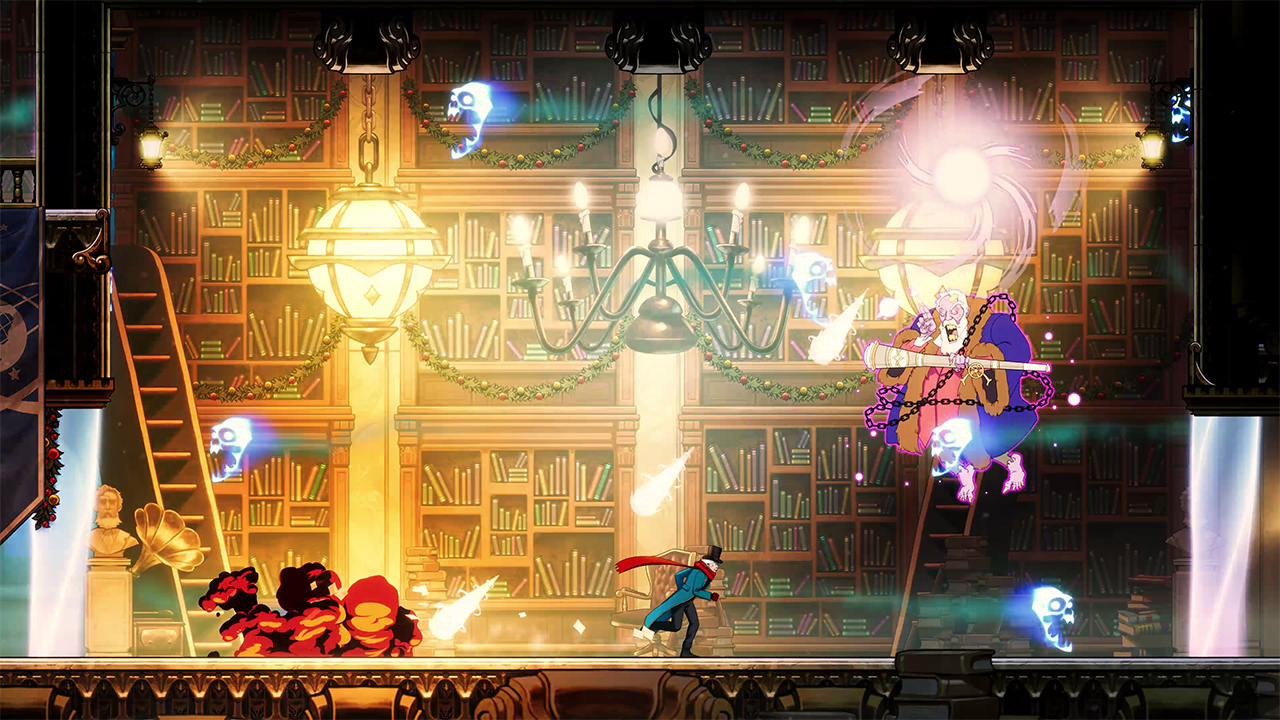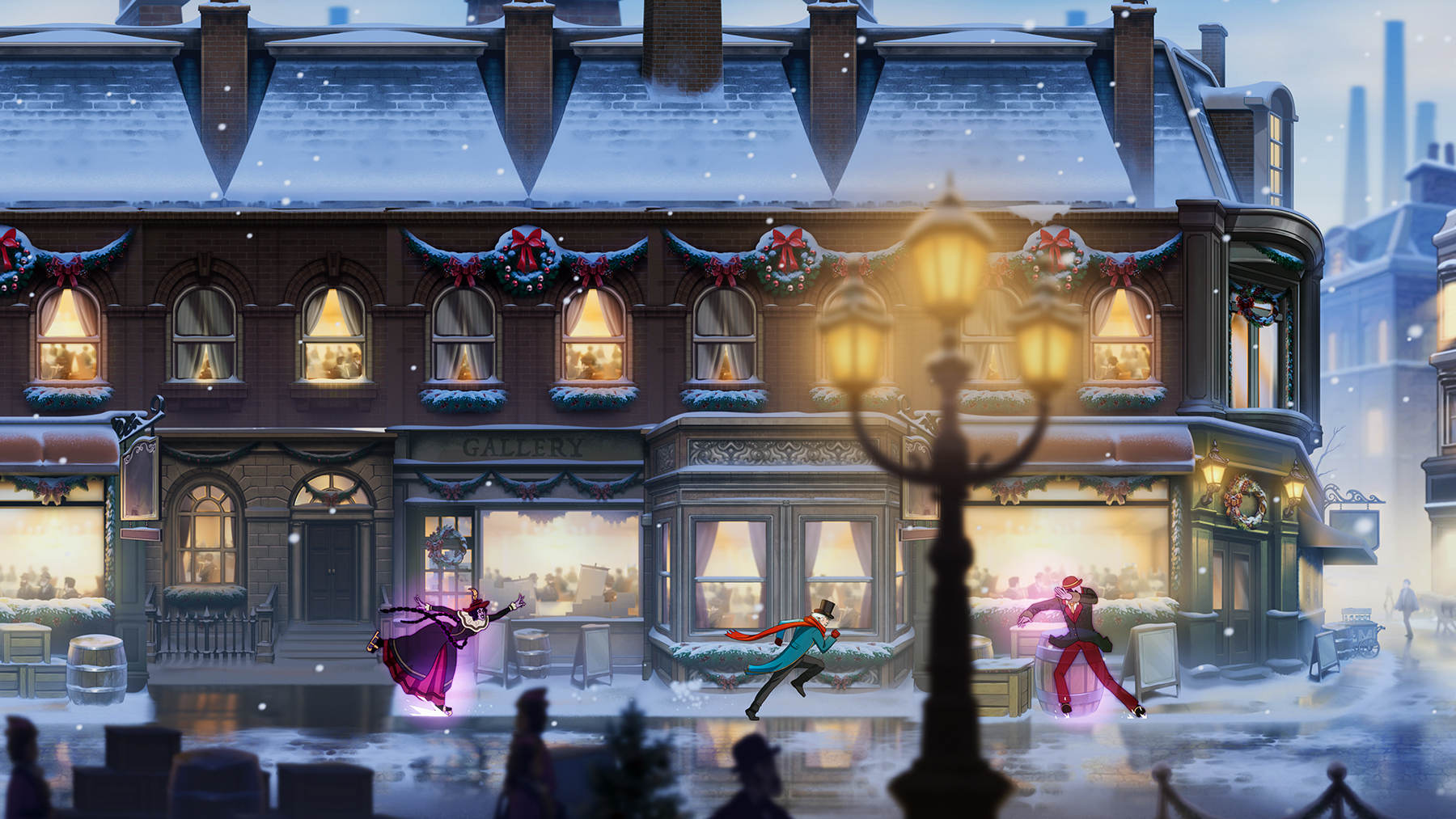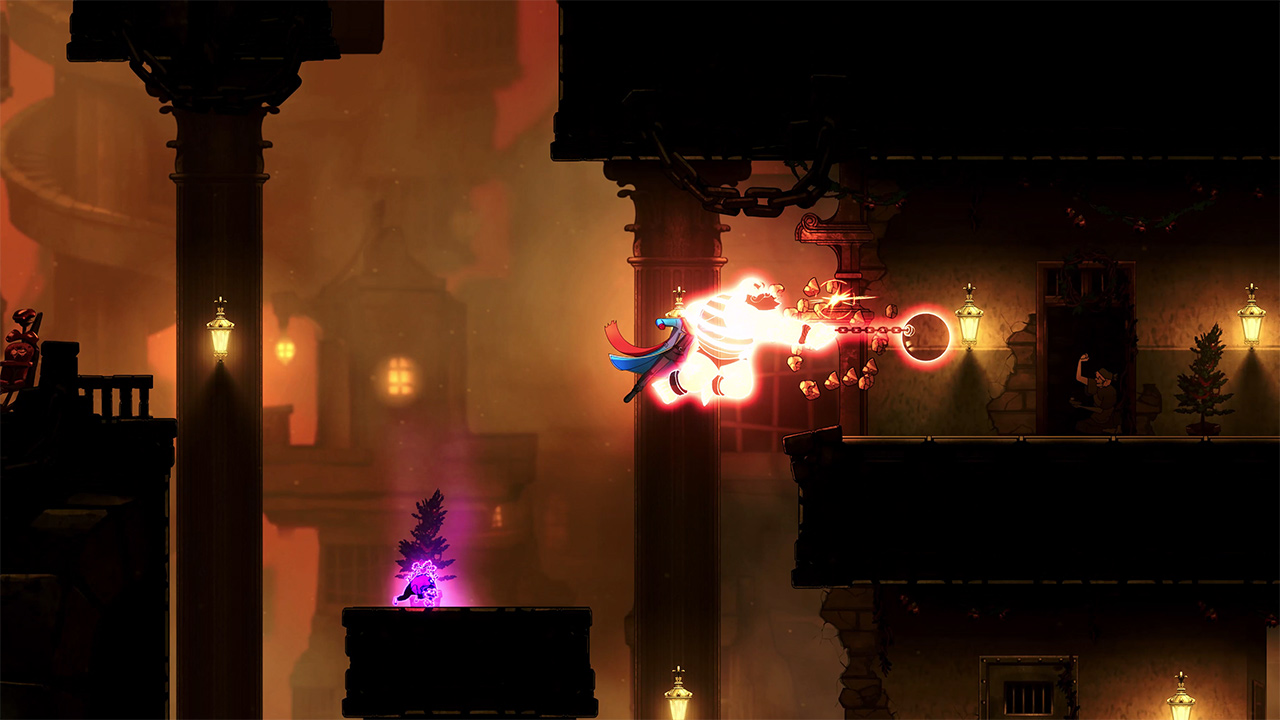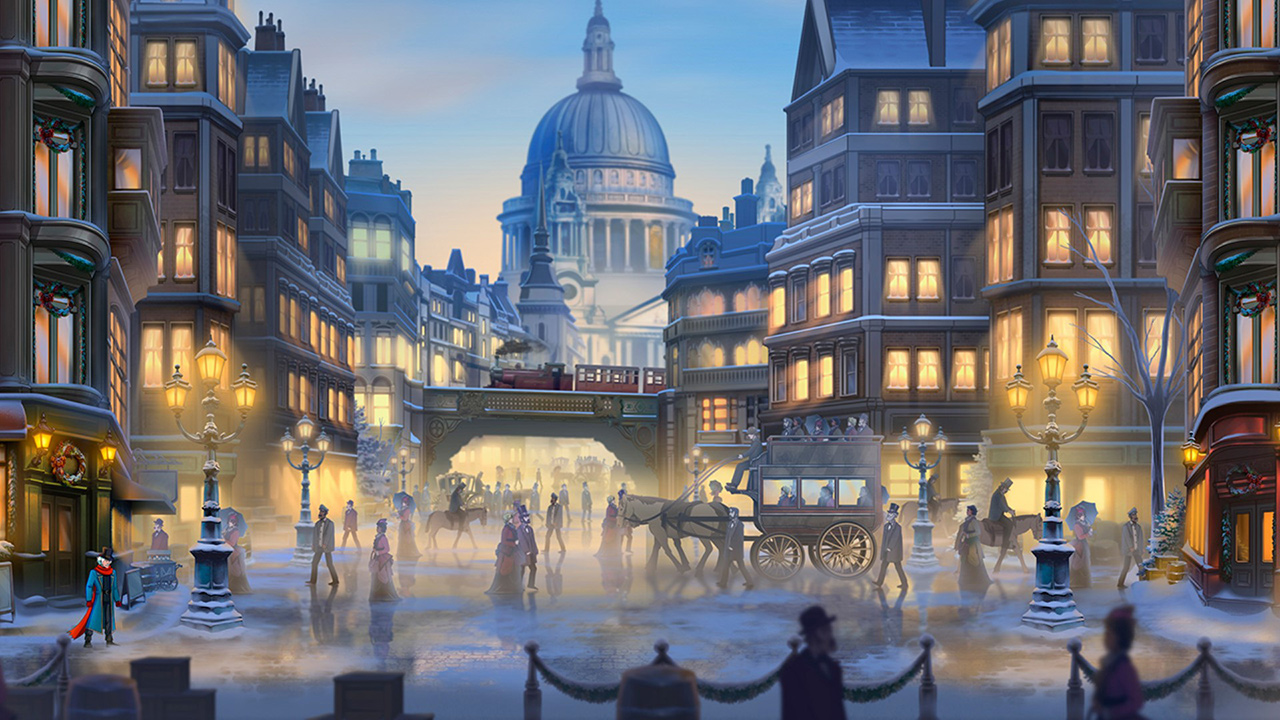"No space of regret can make amends for one [Metroidvania's] opportunity misused."
“It’s beginning to look a lot like Christmas,” and what better way to bring in the season than with a new take on Charles Dickens’ A Christmas Carol?
“Not without Muppets,” you say? That’s fair. But what if I told you this time around we get a an already redeemed Ebenezer Scrooge playing the role of a sword-wielding action hero who must battle unrepentant ghosts and union busters to take out a recently deceased industrialist who’s interfering with the lessons of the Christmas spirits?
Ebenezer and the Invisible World is as gonzo as it sounds. And although your English lit teacher will likely take issue with this “reimagination,” it’ll provide Metroidvania fans with some Christmas joy.
The story boils down to a corrupt industrialist, Gaius Malthus, dying and leaving his fortune to his son, Caspar. The younger Malthus ends up being even worse, and thus gets the same Christmas Ghost treatment that redeemed Ebenezer. Sadly, however, with different results. The Ghost of Christmas Yet to Come reveals Caspar dying immediately after creating a device that would “sever” from society the workers that the Malthus family detests. Caspar gets the hint, but a Dark Spirit shows up and is like, “Dude, you now know it can be done, so just invent it before you’re old and feeble.”
So, Caspar has a new goal, and he has become even worse to London’s workforce than he was before. It’s up to Ebenezer—with his knowledge of the invisible world, his newfound holiday spirit, and his ability to jump nearly twice his own height—to save Christmas.
I’ve just spent a lot of time focusing on the setup for Ebenezer and the Invisible World. That’s by design, because there isn’t a whole lot to cover beyond that. If you’ve played any Metroidvania before this, you know what to expect. That’s not to say it isn’t an entertaining game at parts, but the most unique thing about it is its premise and art direction.
You know the routine. You travel across a map block/screen by block/screen, fighting a wide variety of bad guys along the way. You’re presented with numerous routes you can’t take until you’ve acquired the right ability, meaning there’ll be plenty of back-tracking as you push through the story. Train stations speed up the process, but you have to find and unlock them first. Unfortunately, neither they nor the game’s save locations are terribly convenient. An accurate depiction of London, maybe? It’s been too long since I’ve been there.
Players are given numerous side quests as they move along, most of which result in valuable items, unlocked characters, or cash rewards.
Cash is hard to come by, and that’s very annoying at the start when you’re at a skill disadvantage or nowhere close to raising enough money to complete quests that require you to purchase items. This means you’ll be grinding, which you’d likely be doing anyway because enemies respawn when you save. If you die, your quest progress is saved, but little else. As a result, repetition sets in early.
Combat is OK, though. There’s plenty of jumping and attacking, of course, along with the handy ability to quickly back away from an enemy. A little trial and error will help you pass most enemies. Don’t overthink most of them and you’ll be fine. Just hit the ice skating ghosts, for example, instead of trying to get into proper position when they turn, like I did.
Timing your attacks isn’t hard against most grunts, and it only becomes an issue when you’re also trying to navigate platforms. Thankfully, Ebenezer’s elderly bones are strong enough to withstand drops from any height.
You will need to master new abilities as you progress, but you’ll get a lot of help from other friendly ghosts. These come in the form of advanced attacks or the ability to jump higher, pass through locked doors, etc. It doesn’t take long before you’re able to get places you couldn’t before.
Unfortunately, the map isn’t terribly friendly. It shows you where you’ve been and what doors are available, but doesn’t let you know what can be reached, what you may have found but couldn’t access, etc. For example, you may find a big treasure chest you can’t yet open. Cool, come back for it later, except the map doesn’t let you know where it is; you just have to remember. A friendly icon here and there would be nice.
A few other items get in the way, too. Some are minor, like the fact that the L-stick triggers conversations, so you end up talking to people when you’d rather just run or jump past them. Some are major, like the number of times the game crashed on me. Considering the lack of save points, crashes can be rage inducing. You may find yourself having to add a new controller, TV, or wall to you Christmas wish list.
Ebenezer and the Invisible World does look great, though. The hand-drawn visuals depict London in that comfortably lit, snowy, Victorian paradise that we associate with Christmas.
Even the sewers seem festive. It’s odd that you have to jump across rooftops to reach certain streets, but I imagine the Mary Poppins choreographers would approve.
Despite these issues, I can still recommend Ebenezer and the Invisible World as a Christmas game. The repetition, crashes, and unfair saving issues are easier to overlook when compared to other holiday-themed games, most of which are cash grabs. When compared to other Metroidvanias, however, there are better options available.
Review: Ebenezer and the Invisible World (Nintendo Switch)
Average
Ebenezer and the Invisible World brings a fun, holiday-themed premise and palette to Metroidvanias, but not much else. Annoying issues and gameplay repetition will bring out the Scrooge in some gamers, but Metroidvania fans may see it through to redemption.

